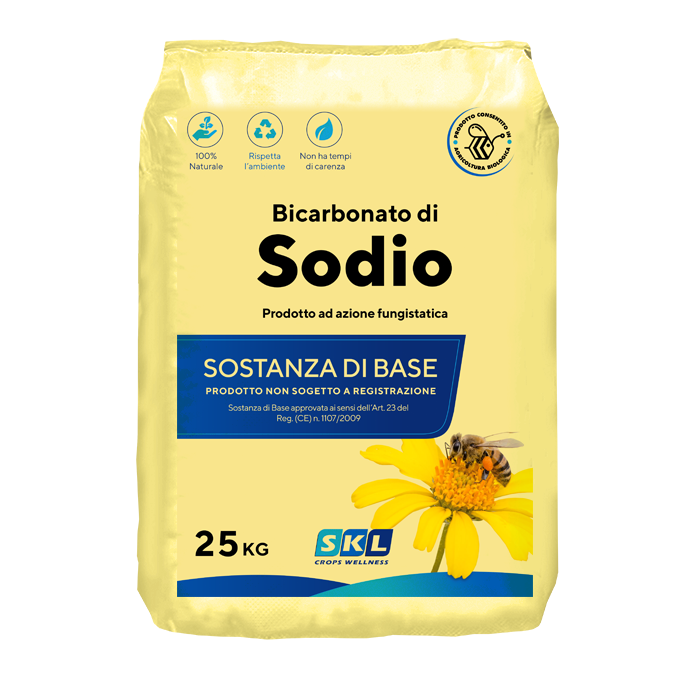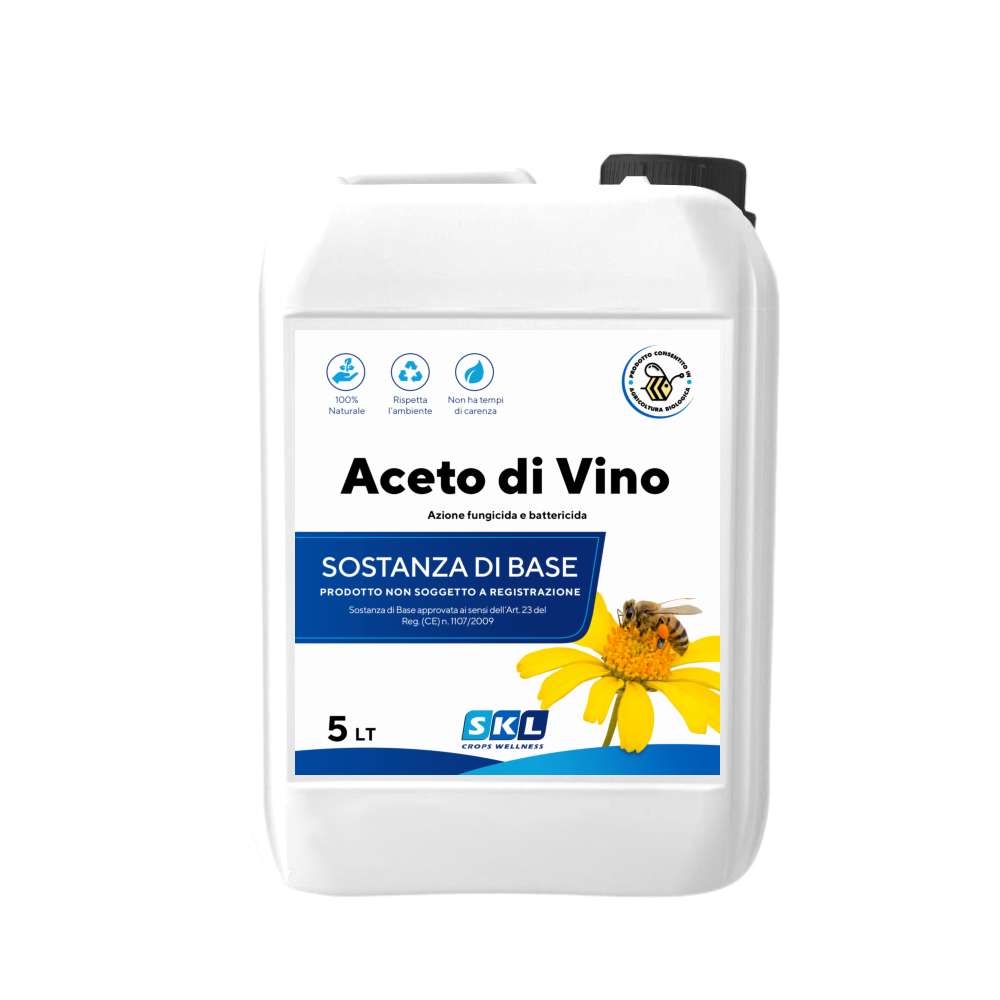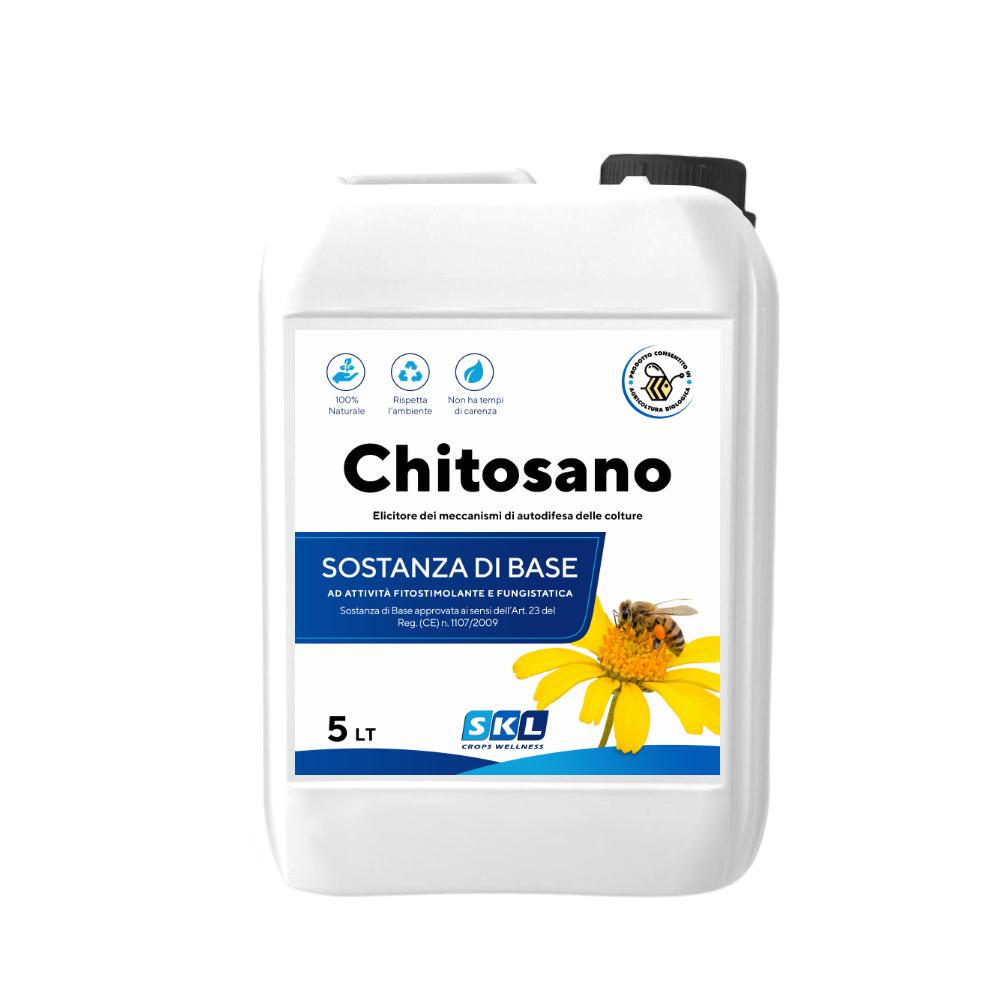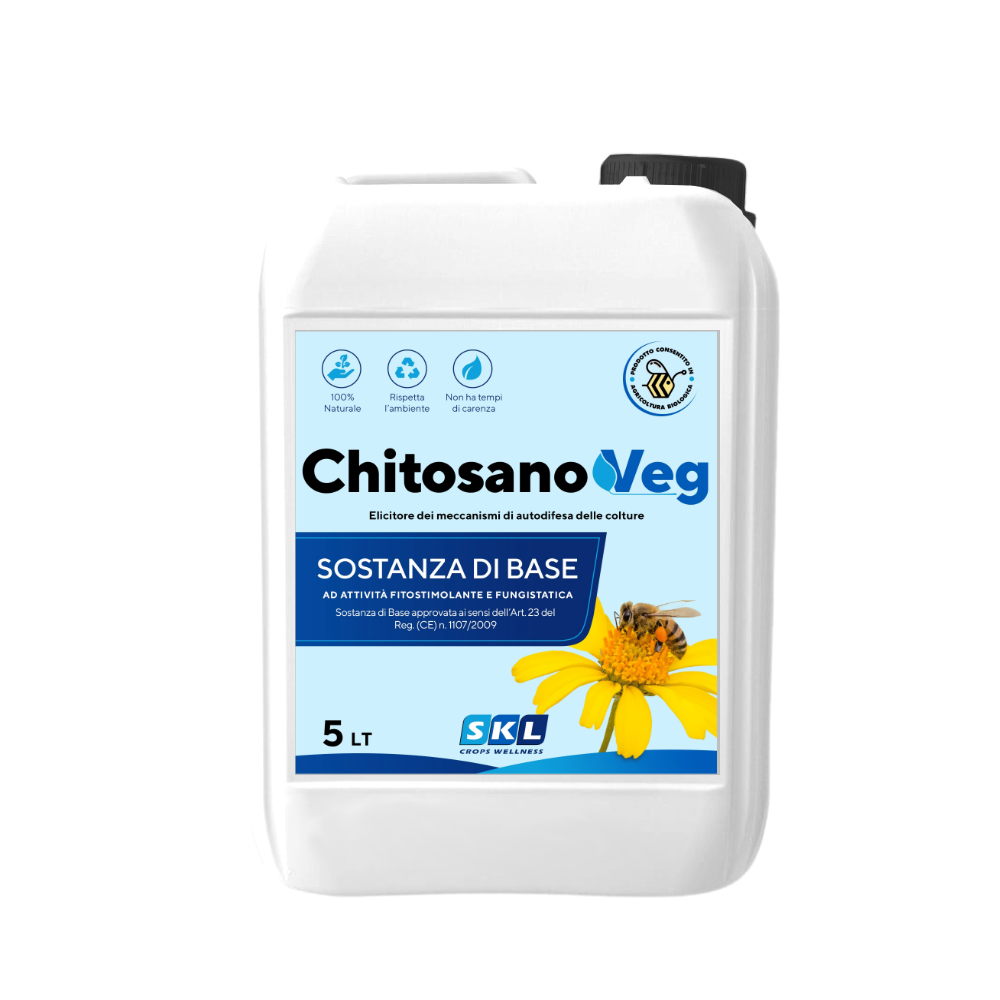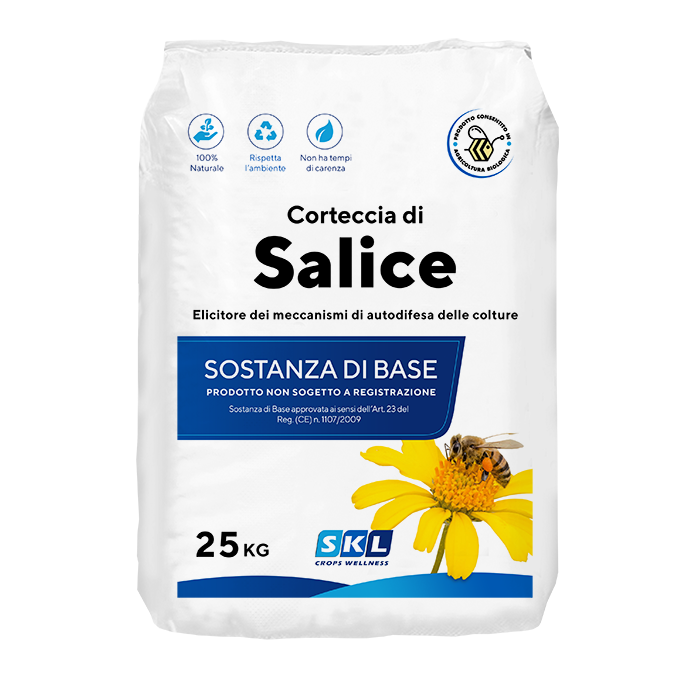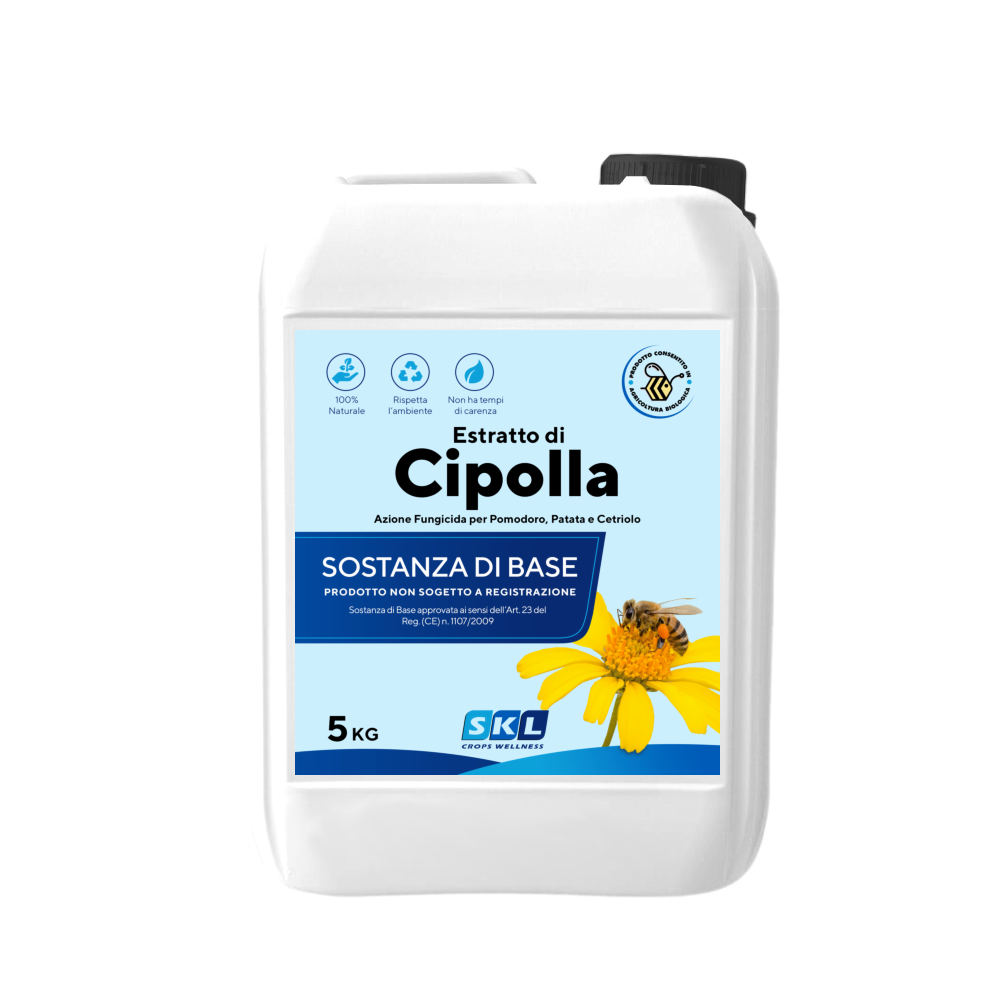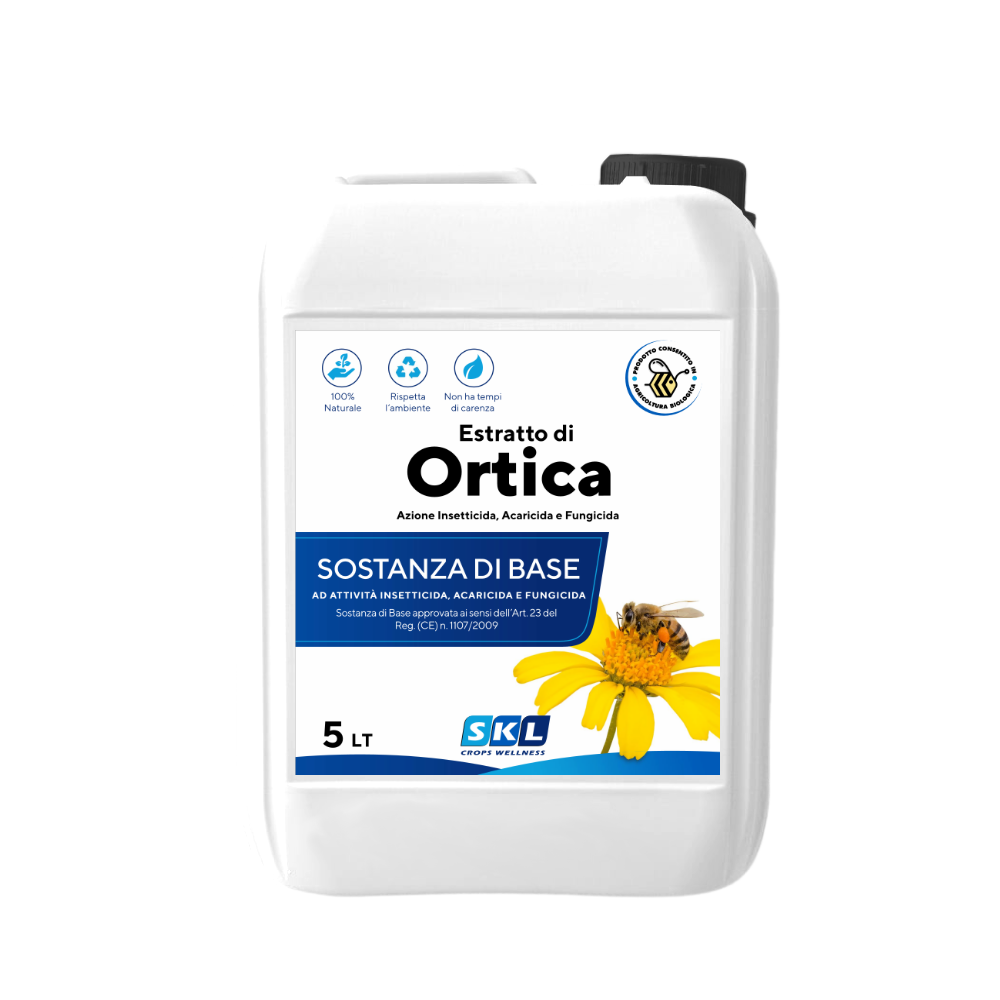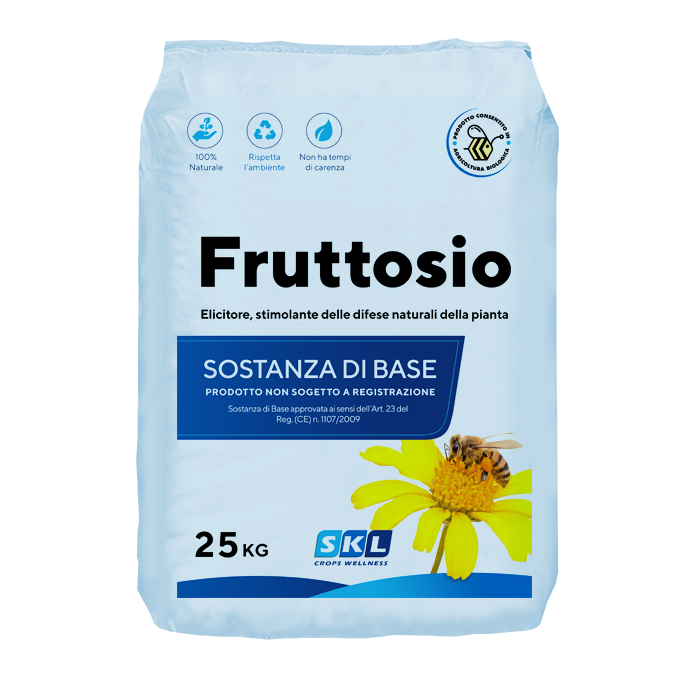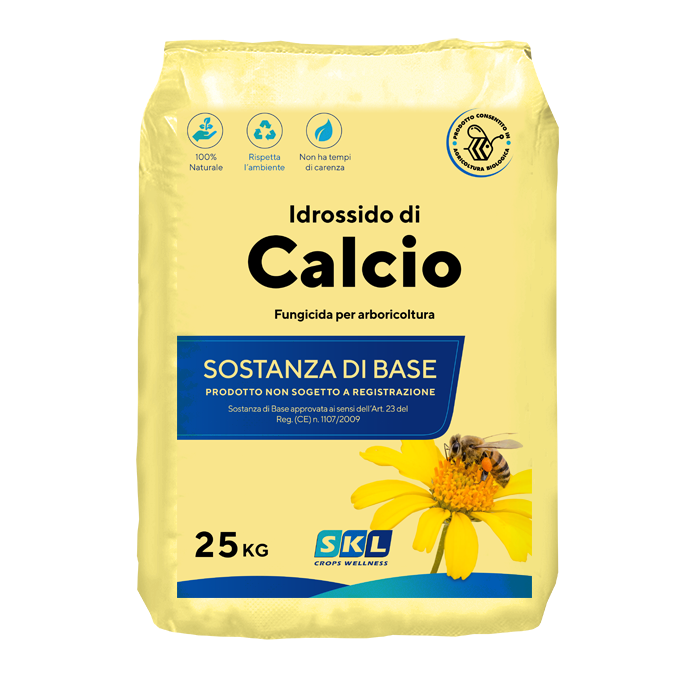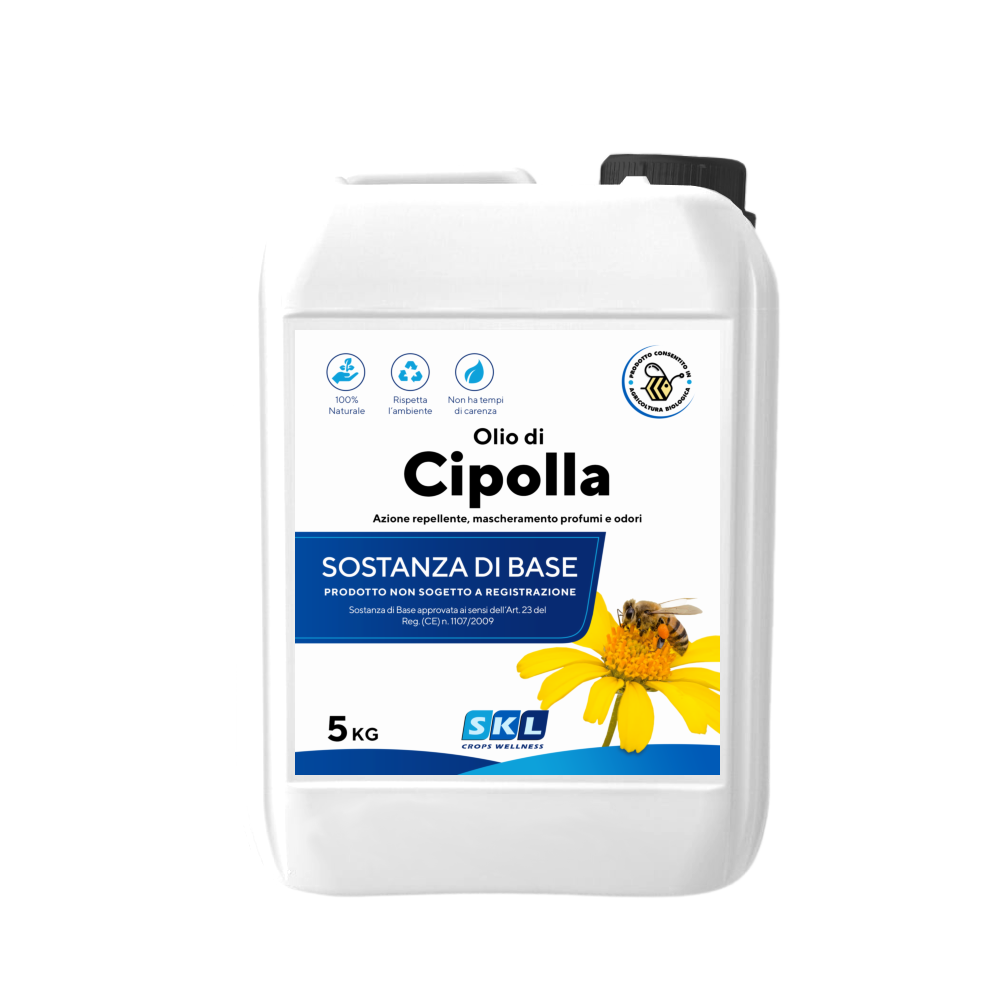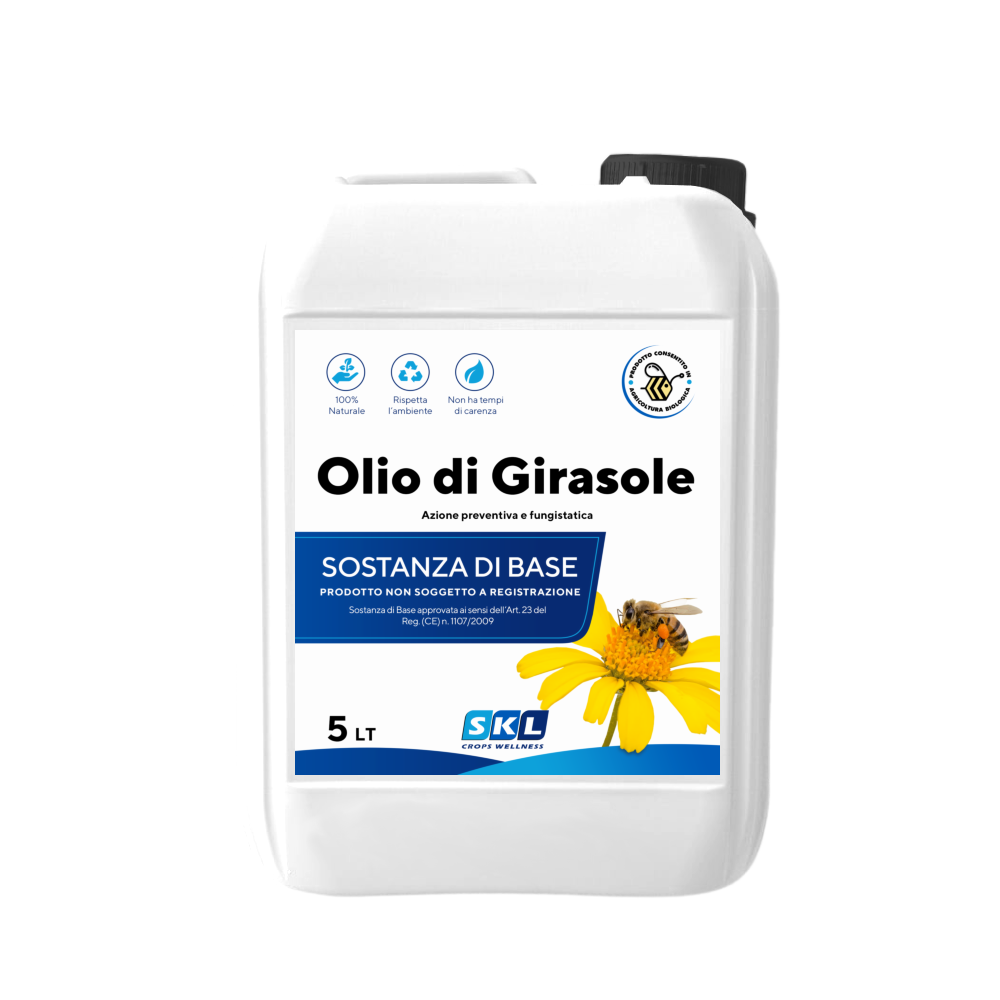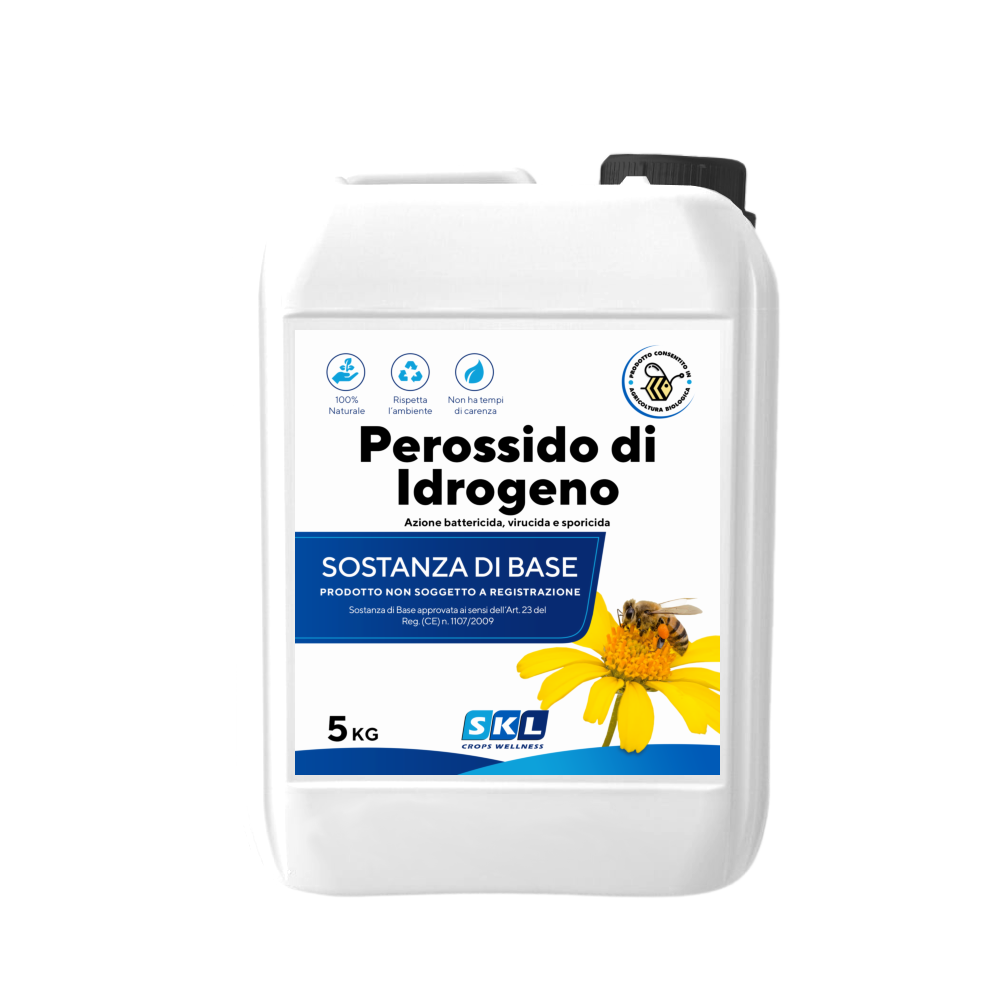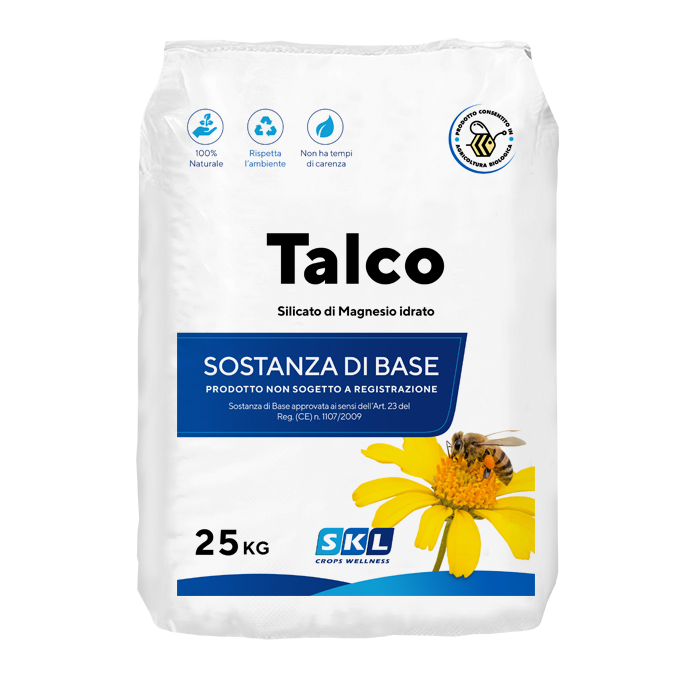Description
The Sodium Bicarbonate (NaHCO3), commonly called Sodium Bicarbonate or Sodium Hydrogen Carbonate, is a derivative of carbonic acid and is obtained from Sodium Carbonate, water, and Carbon Dioxide.
At room temperature, it appears as a white crystalline powder, soluble in water and insoluble in alcohol. For centuries, Sodium Bicarbonate has been obtained in impure form from the ashes of algae and plants from salt lakes. In an aqueous solution, when heated not exceeding 100 °C, it begins to decompose into Carbon Dioxide and Sodium Carbonate, resulting in a mild alkaline reaction.
The Sodium Bicarbonate has been included by the European Union in the register of Basic Substances, "substances and/or products already marketed for other purposes, for example for food uses, but which can also find useful application for phytosanitary purposes" (IBMA Italy).
What is Sodium Bicarbonate used for in agriculture?
Sodium Bicarbonate is an alkaline reaction salt. When applied in solution on vegetation, it reacts by raising the pH of the leaf surface, creating an inhospitable environment for fungi, which require a sub-acid environment to proliferate. Furthermore, the increase in osmotic pressure on the leaves blocks the germination of fungal spores.
Its use in agriculture is regulated by the European Union as a basic substance, with fungicidal action against
- Powdery Mildew on Grapevines, Vegetables, Small Fruits, and Ornamental Plants. It is also useful in controlling Downy Mildew.
- Storage Molds (Penicillium).
- Apple Scab.
- Herbicide against Mosses of the Lunaria genus.
What are the doses of Sodium Bicarbonate with fungicidal action?
The doses of Sodium Bicarbonate vary depending on the crop and its level of sensitivity. The European Union suggests average doses (minimum - maximum):
- 333 - 1000 g/hl for Vegetables, Small Fruits, and Ornamental Plants.
- 420 - 2000 g/hl for Grapevines.
- 500 - 1000 g/hl for Apples.
- 1000 - 4000 g/hl for Oranges, Cherries, Apples, and Papaya, etc.
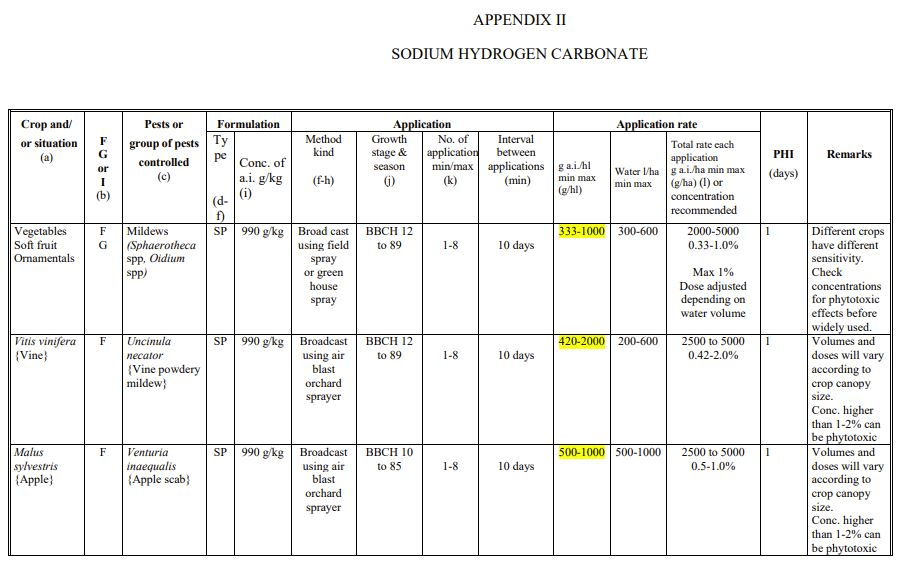

The Sodium Bicarbonate as a fungicide is authorized in Organic Farming.
In addition to being classified as a Basic Substance, Sodium Bicarbonate in Italy is considered a Corroborant, a substance of natural origin that improves the resistance of crops to possible biotic and abiotic stresses.
Dosage
| Crops | Adversities | Doses |
|
Vegetables, Small fruits, Ornamentals |
Molds |
333 - 1000 g/hl |
|
Grapevine |
Powdery mildew |
420 - 2000 g/hl |
|
Apple tree |
Apple scab |
500 - 1000 g/hl |
|
Fruit trees |
Blue mold Green mold |
1000 - 4000 g/hl |
|
Potted plants |
Moss |
122 Kg/ha |
The reported doses refer to those officially published in the EFSA Reports.

